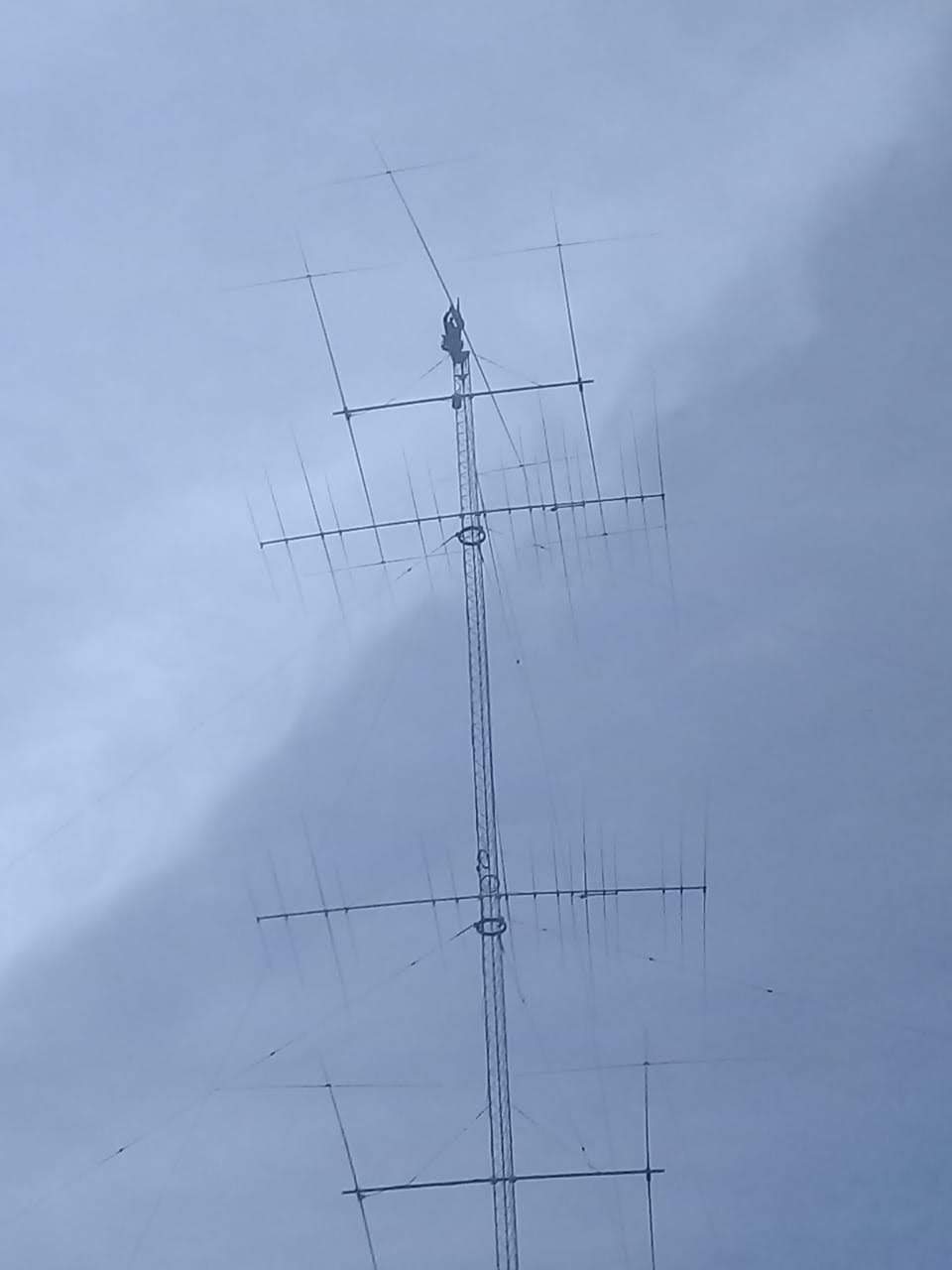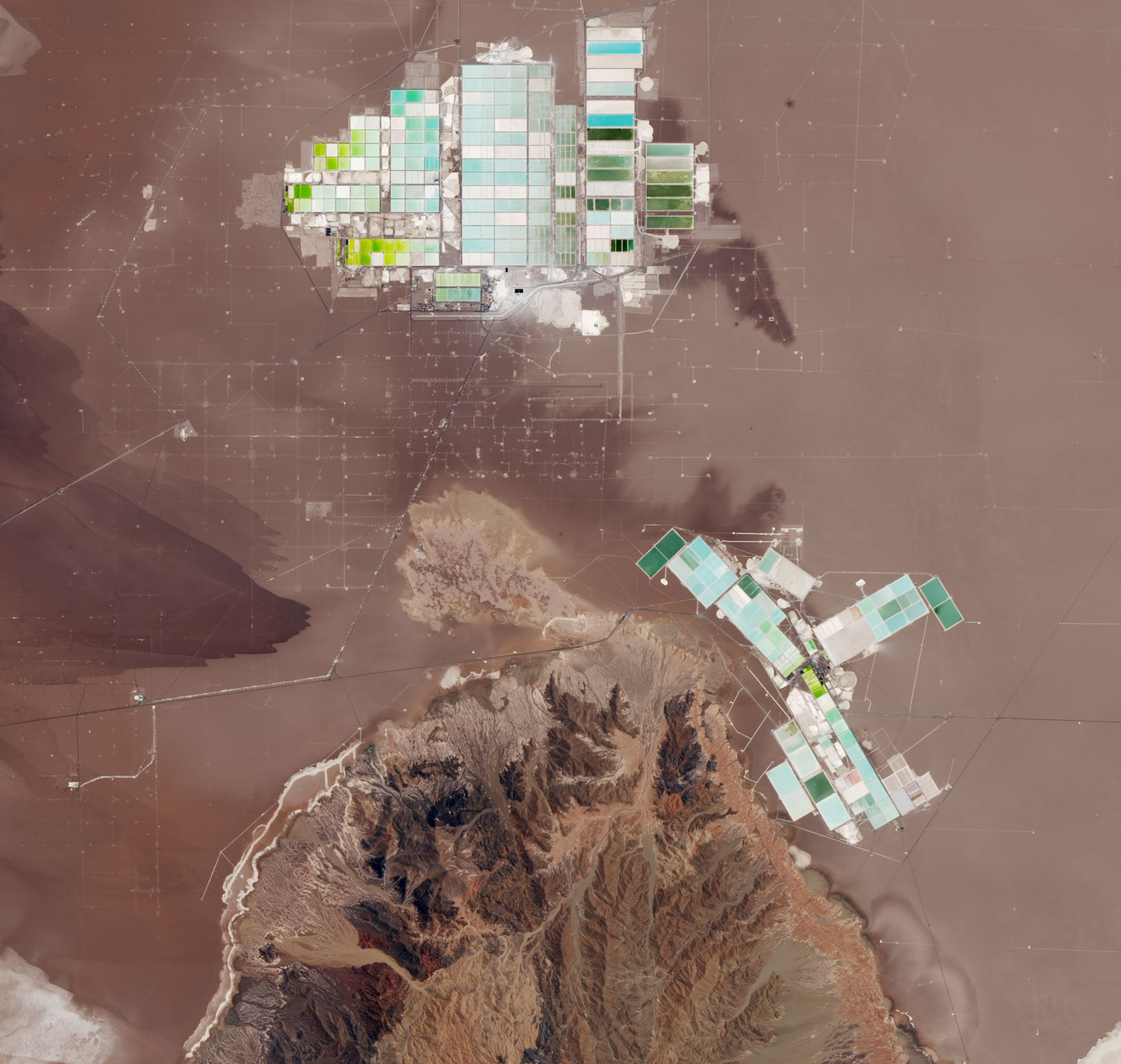 February 20, 2019 Editor: Paul Bourque, N1SFE | |||
IN THIS ISSUE
Since Punxsutawney Phil didn't find his shadow this year, you'd better start planning your outdoor antenna projects now. Especially if what you are planning might require permits, approvals, or lining up construction help. Don't forget to check out resources on the ARRL website, including safety guidelines, and books including "Antenna Towers for Radio Amateurs." Last weekend's airwaves were crowded with the CW version of the ARRL International DX Contest. There are many reports that 160 and 80 meters experienced exceptional propagation. The phone version of this contest is coming up on March 2. You can scratch the digital contesting itch with the upcoming NAQP RTTY contest. There also eighteen college stations that will be competing against each other during this contest as part of the NA Collegiate Championship. So far, Indiana University's K9IU is leading the pack, but Georgia Tech's W4AQL is hot on their heels. They're all reporting into a live scoreboard, so you can follow the action. 21 Feb - 6 Mar 2019 Complete information for all contests follows the Conversation section February 21 February 22 February 23
February 24 February 26 February 27 February 28 March 1 March 2
March 3
March 4 March 5 March 6 The North Carolina and South Carolina QSO Parties are celebrating FIVE years of working together in providing what amounts to an "All-the-Carolinas" QSO Party Weekend. The contest sponsors may call it "synergy" but for participants that's another word for fun! Special for this year is a drawing for real prizes for operators that make a contact with the bonus station in each of the states and submit their logs to both events. Check out the websites and rules for more details. Being spotted during a contest by humans or by CW/RTTY skimmers can be a critical rate enhancer. To maximize your chances of being automatically spotted, your CQ messages should follow some basic rules that were outlined in N6TV's 2014 presentation on the topic:
An awareness of how CW skimmer network works also improves your chances. According to a recent post by Pete, N4ZR to the RBN Operators group, it would be best for CW operators to stay within 70kHz of the bottom of 40, 20 and 15 meters, since the default configuration for Skimmer configuration is to decode CW for the first 70kHz of those bands. This "means that if you CQ above xxx70, you may be spotted less often because fewer nodes will be decoding above that frequency. On the other hand, if it helps to find a clear run frequency, the benefit may outweigh any loss. With 170+ nodes on the air, there should be plenty of spots for all." Eric, K3NA, writes: Some contesters may find Palette's plug-and-play illuminated knobs, sliders and buttons useful in improving the "user interface" of their station. There are many potential applications for customized controls sitting next to the keyboard:
Bob, K0NR, talks about how VHF isn't just for line of sight communication in his latest blog post. He provides a nice survey of some of the propagation modes at higher frequencies, and how a dB here and a dB there all add up. The scores are in from the first event of the North American Collegiate Championship. Eighteen schools registered for the Championship, and fifteen of those reported scores in the first of two contests that will decide the winner. Indiana University is in the lead with Georgia Tech close behind. How close? IU has ONE FEWER contact, but TWO MORE multipliers. It's reminiscent of the close multi-multi battles that occur in the W1-W3 call areas. What will happen in the second event? If you're not competing in the contest, tune into the Live Scoreboard during the contest to watch. ARRL still has a number of unsponsored plaques available for the 2019 RTTY Roundup, 2019 ARRL DX and 2019 ARRL June VHF Contests. See the bottom of the page at http://www.arrl.org/plaques-and-awards# for more information. Plaques are $75 (shipped), payable by check to "ARRL Contest Plaques", 225 Main St, Newington, CT 06111. Be sure to contact the ARRL Contest Branch to confirm availability. (Bart, W9JJ) Key Clicks Key Clicks are caused by the undesirable and unwanted widening of a CW signal due to energy in the signal's sidebands. Contributing factors include the shape of the keying waveform, too-short rise and fall times of the transmitted signal, or variation in the carrier oscillator frequency. Key clicks can sound like thumps or clicks to a receiver tuned with a few kHz of the transmitter frequency. Unscrupulous operators have used key clicks to their advantage by making adjacent frequencies undesirable to use, seeking to gain an unfair advantage in crowded contest conditions. This is against the rules of most contests.
Flex Radio Systems demonstrated their new MultiFlex software at the Orlando Hamcation. Matt Youngblood discusses various operating scenarios in which the new feature could be used, which include multi-operator one-radio (MO1R) contesting. A number of ARRL Contests have had results posted recently:
Participation in the 10 GHz and Up Contest increased by 43% this year! The results for the 2018 Scandinavian Activity Contest (SAC) are final and have been posted. The next running of the SAC will be September 21-22, 2019 (CW) and October 12-13, 2019 (SSB). Getting Spotted on Phone Until we have SSB skimmers, you're going to have to rely on humans to spot you on phone during a contest. You'll have to rely on social capital to increase your chances. Joining a contesting club, becoming friends with more contesters, becoming a 'well known individual' in the contesting community, frequent and consistent contest participation, and in general raising the visibility of your call sign through impeccable operating habits are all ways to put yourself out there. The theory behind locating buried cables using electromagnetic induction is discussed in a booklet published by the SPX Corporation. Active and passive detection, frequencies to use for active detection, and cable fault detection and locating are covered in detail. (Robert Dehoney via Ward, N0AX) Mac users in need of a voice keyer for use with dogparkSDR should check out Peter, W6OP's SDR Voice Keyer software. It takes advantage of a port of the smartSDR API to OSX. Peter also has some suggestions on his website for programs and programming libraries for those that are looking for more ways to use Flex Radio Systems gear from their Mac environment. According to Randy, W0GK, when your PCB artwork is done and you are looking for a PC Board house, the PCBShopper website will help you choose from a list of vendors and prices after you enter the parameters for your board such as size, layers, and number of copies. (W0GK via QRP-L)
Liquid cooling systems are used by commercial transmitters to shed tens of kilowatts of heat. Here's a discussion of the practice which remains impractical for most Amateur applications. Less noise for amplifier cooling would be welcome, especially during high power RTTY contesting. Mike, AB3AP, suggested some Python language functions to help with power calculations: "For isolation and other calculations in the ham shack where Watts are used, a few python one-liners useful. When in python, copy the following: from math import * w2dbm = lambda x: 10 * log10(x/10) + 30 Using an expression like tells you that 1500 W into a device with 60 dB isolation will leak 1.5 mW."(Mike, AB3AP via Elecraft email list) Macro Focus While setting up a new computer for the ARRL RTTY Roundup last month, I took the opportunity to examine the message macros we were using in greater detail. My logger of choice for this contest was N1MM Logger+, but other loggers have similar capabilities in their macros for controlling both the outgoing message and the logging process. The N1MM Logger+ documentation wiki has two cases of good example messages, but curiously enough the ones that are installed by default with N1MM Logger+ are different, and in my opinion not as good since they have extra filler words like "de" that aren't necessary for the contest exchange. I edited the message file to have the CQ, exchange, and TU messages that I wanted, and then went back to documentation to explore some of the more advanced macros. One feature that I've wanted for a while but only just discovered is already built in is the ability to vary a particular macro message. A practical example would be to change my RTTY Roundup 'TU' message every now and then from "TU N9ADG CQ" to "TU N9ADG RU" just to keep things interesting. I found that capability in the VARYMSG1 macro. The list of N1MM Logger+ macros is extensive and reflective of the rich history and broad range of contesting needs, everything from specific contest requirements to packet spot lookups to multiple radio control to multi-operator communication. The chances are that if I have a need for particular macro capability, somebody else has too, and it's already possible and included. But here's one that doesn't exist. Maybe we'll see in the future: {LOGTHENTWEET BRAGS:xxxx} - Log the current contact, then sends a brag message via Twitter using the specified brags file. Substitutes QSO information into the brag message using the macro message syntax. That's all for this time. Remember to send contesting related stories, book reviews, tips, techniques, press releases, errata, schematics, club information, pictures, stories, blog links, and predictions to contest-update@arrl.org 73, Brian N9ADG 21 Feb - 6 Mar 2019 An expanded, downloadable version of QST's Contest Corral is available as a PDF. Check the sponsors' website for information on operating time restrictions and other instructions. HF CONTESTS CWops Mini-CWT Test, Feb 20, 1300z to Feb 20, 1400z and, Feb 20, 1900z to Feb 20, 2000z and, Feb 21, 0300z to Feb 21, 0400z; CW; Bands: 160, 80, 40, 20, 15, 10m; Member: Name + Member No., non-Member: Name + (state/province/country); Logs due: February 23. VHF+ CONTESTS See NCCC Sprint Ladder, South Carolina QSO Party, North Carolina QSO Party, above. 21 Feb - 6 Mar 2019 February 21, 2019 February 22, 2019 February 23, 2019 February 24, 2019 February 27, 2019 February 28, 2019
March 1, 2019
March 2, 2019 March 3, 2019 March 4, 2019
March 5, 2019 ARRL Information Click here to advertise in this newsletter, space subject to availability. Your One-Stop Resource for Amateur Radio News and Information ARRL membership includes QST, Amateur Radio's most popular and informative journal, delivered to your mailbox each month. Subscribe to NCJ - the National Contest Journal. Published bimonthly, features articles by top contesters, letters, hints, statistics, scores, NA Sprint and QSO Parties. Subscribe to QEX - A Forum for Communications Experimenters. Published bimonthly, features technical articles, construction projects, columns and other items of interest to radio amateurs and communications professionals. Free of charge to ARRL members: Subscribe to The ARRL Letter (weekly digest of news and information), the ARES E-Letter (monthly public service and emergency communications news), Division and Section news -- and much more! ARRL offers a wide array of products to enhance your enjoyment of Amateur Radio. Visit the site often for new publications, specials and sales. Donate to the fund of your choice -- support programs not funded by member dues! Reprint permission can be obtained by sending email to permission@arrl.org with a description of the material and the reprint publication. ACKNOWLEDGEMENTS ARRL Contest Update wishes to acknowledge information from WA7BNM's Contest Calendar and SM3CER's Contest Calendar. | |||








